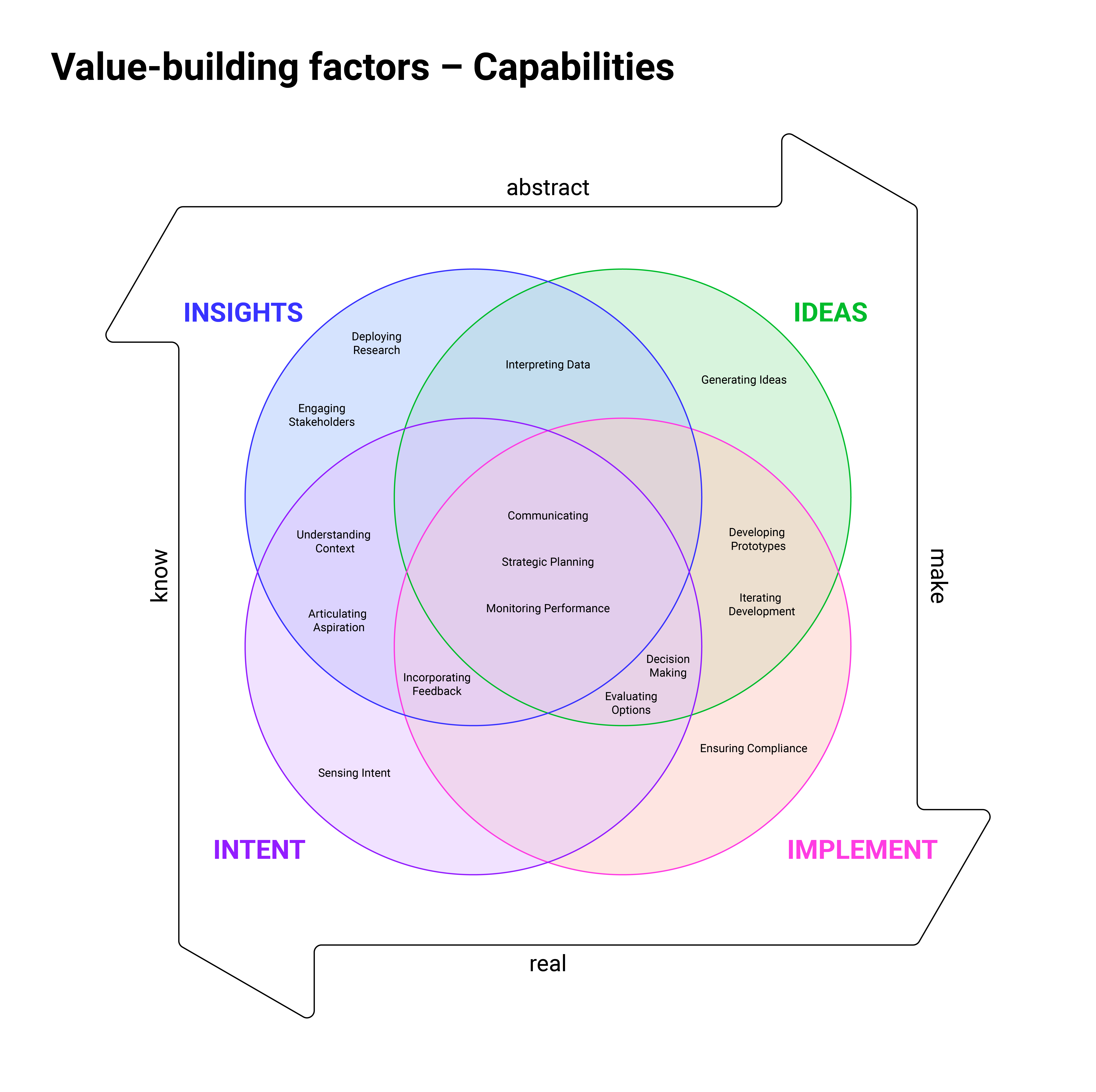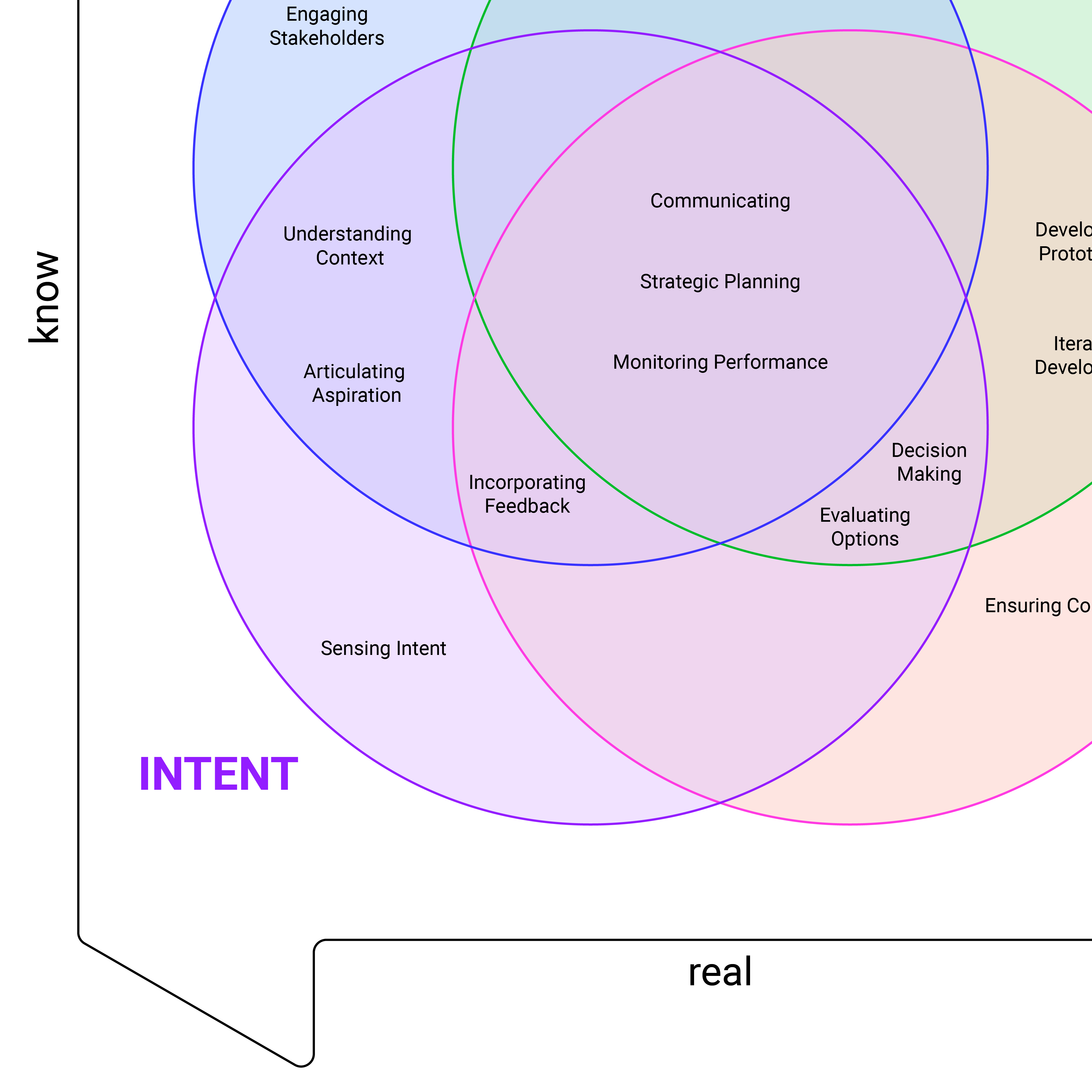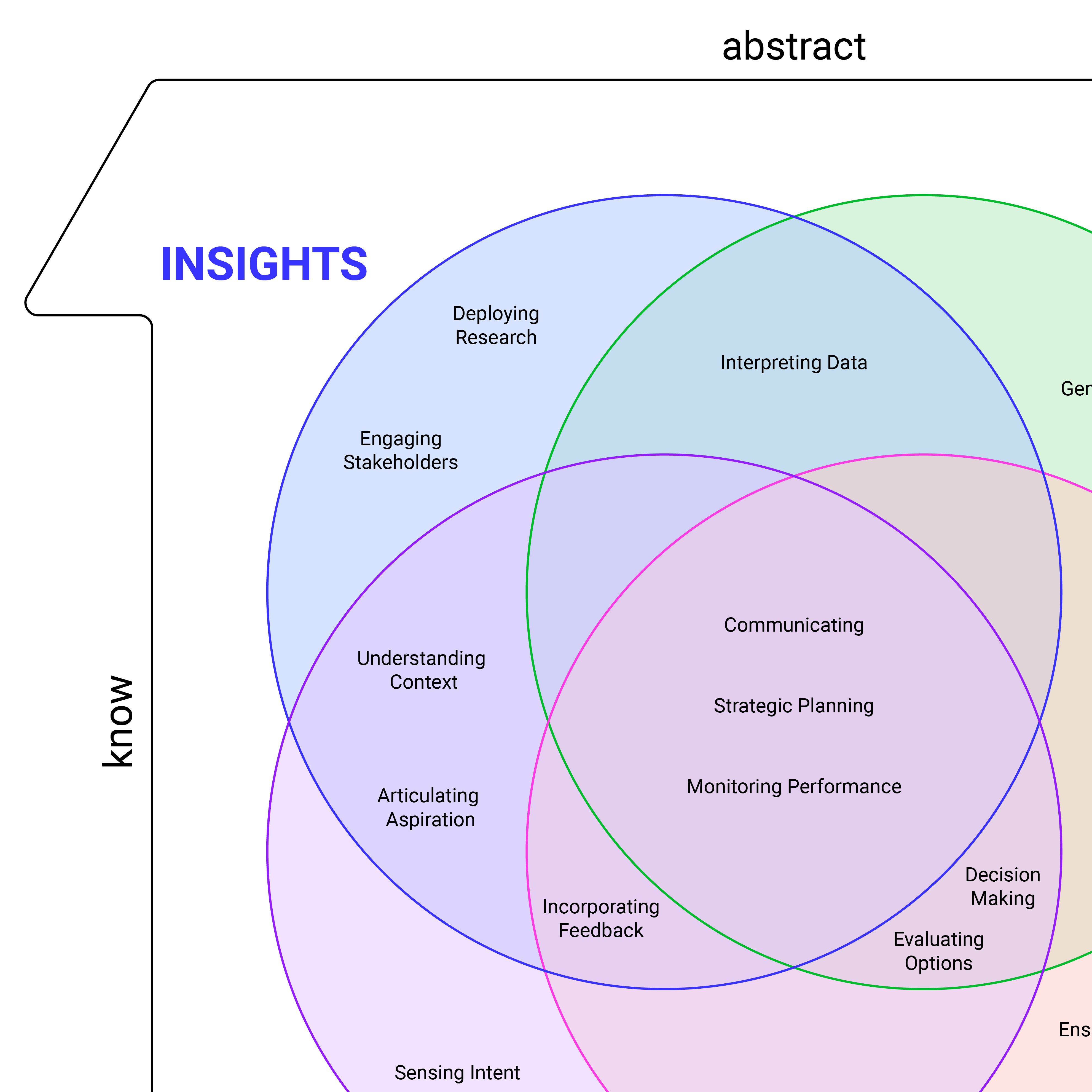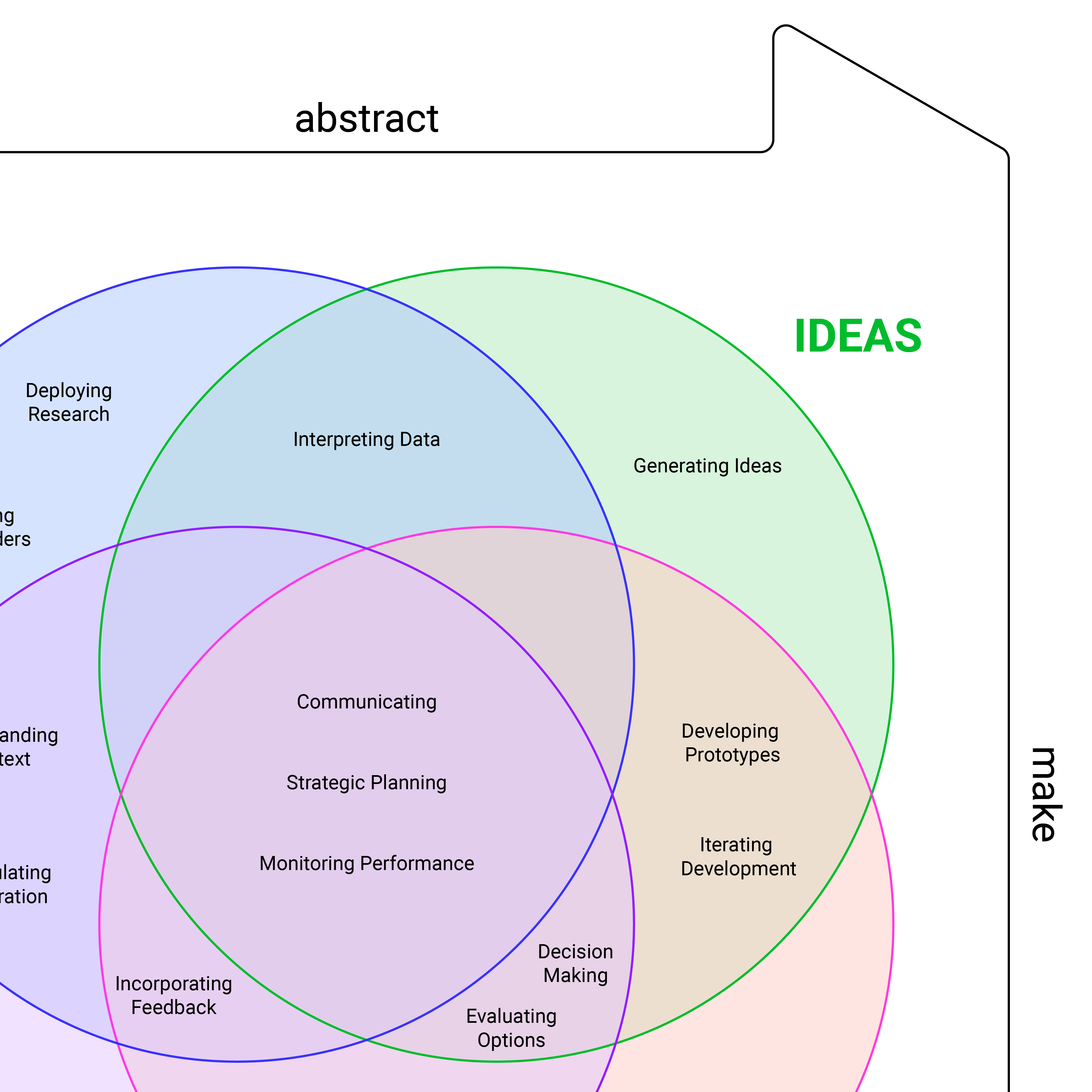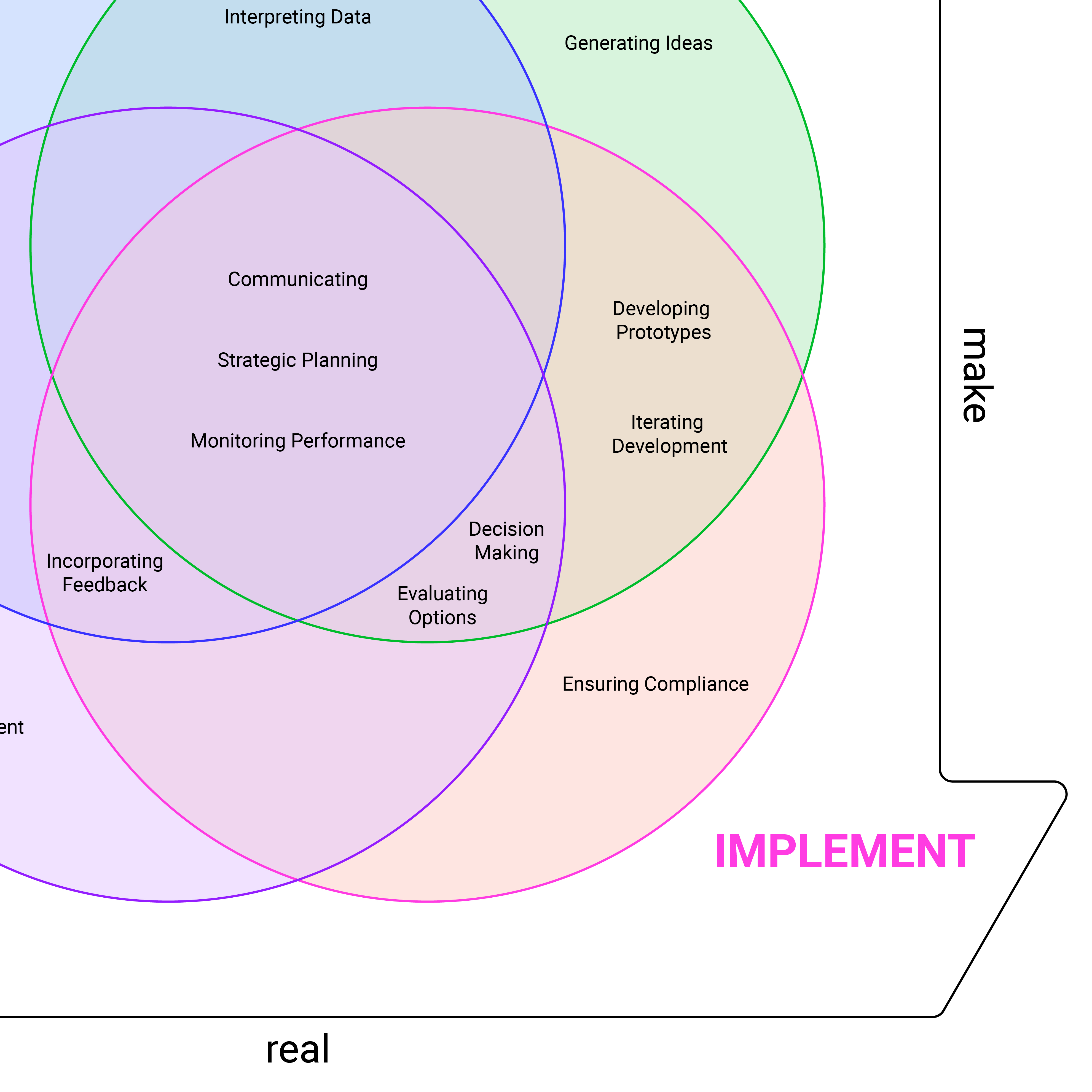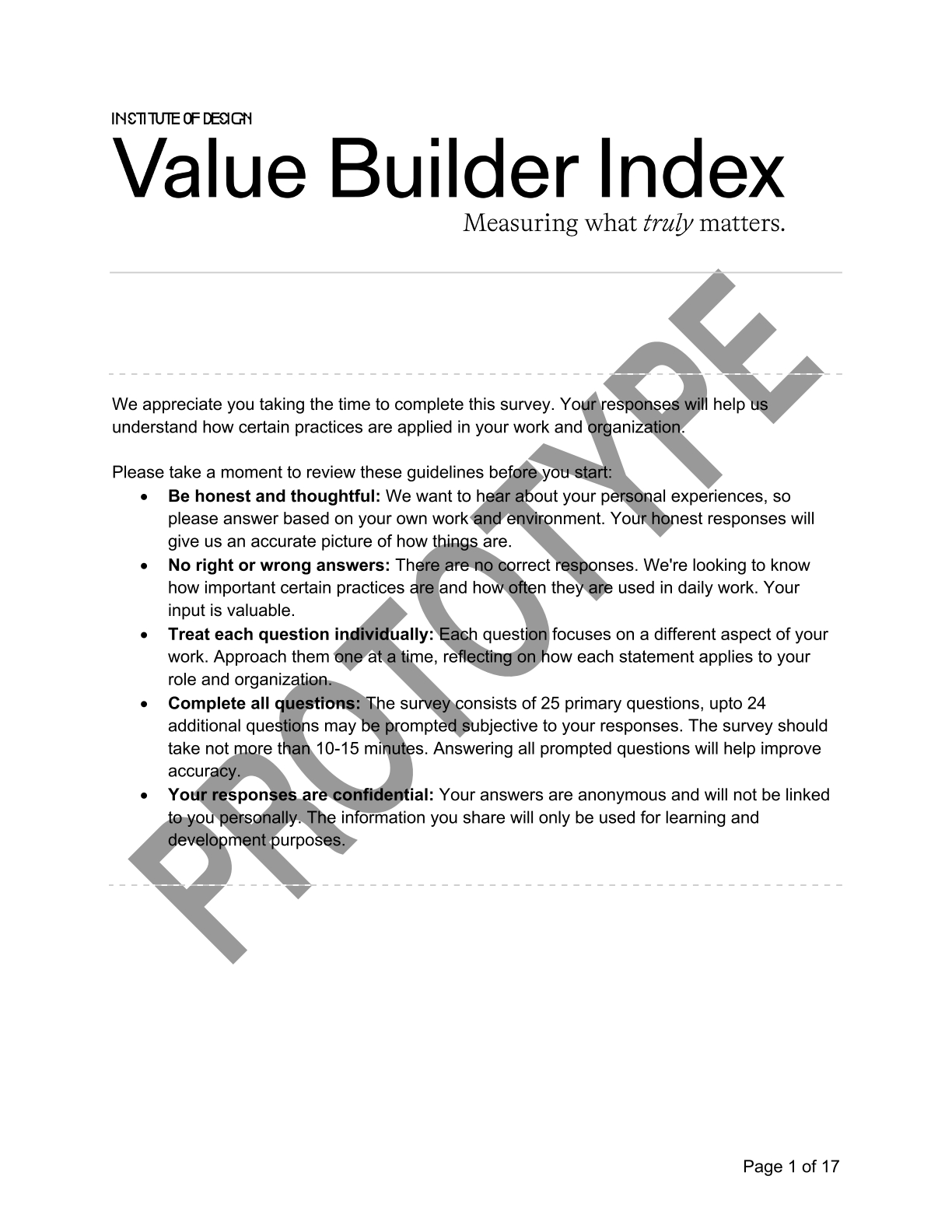
Value Builder Index
Assessing Capabilities, Approaches, and Mindsets of Design Practice
Assessment

About
The Institute of Design (ID) at Illinois Tech has long been recognized as a leader in design-driven innovation and education. To further solidify its position and expand its impact, a new strategic initiative was conceived to build a tool to measure and enhance organizations' innovation capabilities. This initiative underscores ID’s commitment to advancing design as a strategic driver of organizational success while fostering meaningful collaborations with industry partners through its executive education division, ID Academy.
Collaborating with Peter Zapf, the Director of Strategic Initiatives at ID, we have been developing the foundations for this tool since mid-2024 and are currently piloting it. We expect to roll it out by 2026.
Goal
for External Organizations
For organizations wanting to build value for their stakeholders who find it difficult to perform and transform simultaneously (lack dexterity), the Value Builder Index is a framework to deconstruct the practice of design into 30 individual factors that can be used to diagnose, analyze, plan, and administer design education for organizational capability building.
for the Institute of Design
For ID Academy to globalize its executive education service, which customizes content for each learning partner, which is time and resource-consuming, the Value Builder Index is a framework to deconstruct the practice of design into 30 individual factors that optimize planning and creates a portfolio of content, which allows scaling and tailor-fit education for its learning partners.
What do we know?
- Organizations don’t prefer to be told what they should be doing.
- The practice of design can be deconstructed from the Institute of Design’s (ID) point of view.
- 21st-century organizations need to perform and transform to sustain growth.
- ID Academy’s operating model is not scalable with available resources.
- Institute of Design has credible educational resources for helping organizations build design-driven capabilities.
- Organizations can build design-driven capabilities through learning and development.
- Most organizations choose their learning partner within 60 minutes of interaction.
What do we believe we know?
- Design-driven organizations are better at creating stakeholder value and keeping a competitive advantage.
- Surveying employees in an organization can reflect the presence of design-driven practices.
- Some learning partners require awareness of design as an organizational capability.
What do we still not know?
-
How do we survey organizations to understand their current state of design-drivenness?
-
How do we achieve accuracy in surveying in the shortest time?
-
Would organizations entertain being evaluated?
The Value-Building Model
The Institute of Design's Value-Building model can be traced back to Edward Freeman’s Stakeholder Capitalism. An organization's success hinges on meeting the needs of all its stakeholders, not just those who benefit from its stock.
Stakeholder Capitalism aligns with the case for design-driven organizations, which are also positioned to create value for a diverse array of stakeholders, among other characteristics. The four dimensions of Value Building, derived from design practice, are Intent, Insight, Ideas, and Implementation.
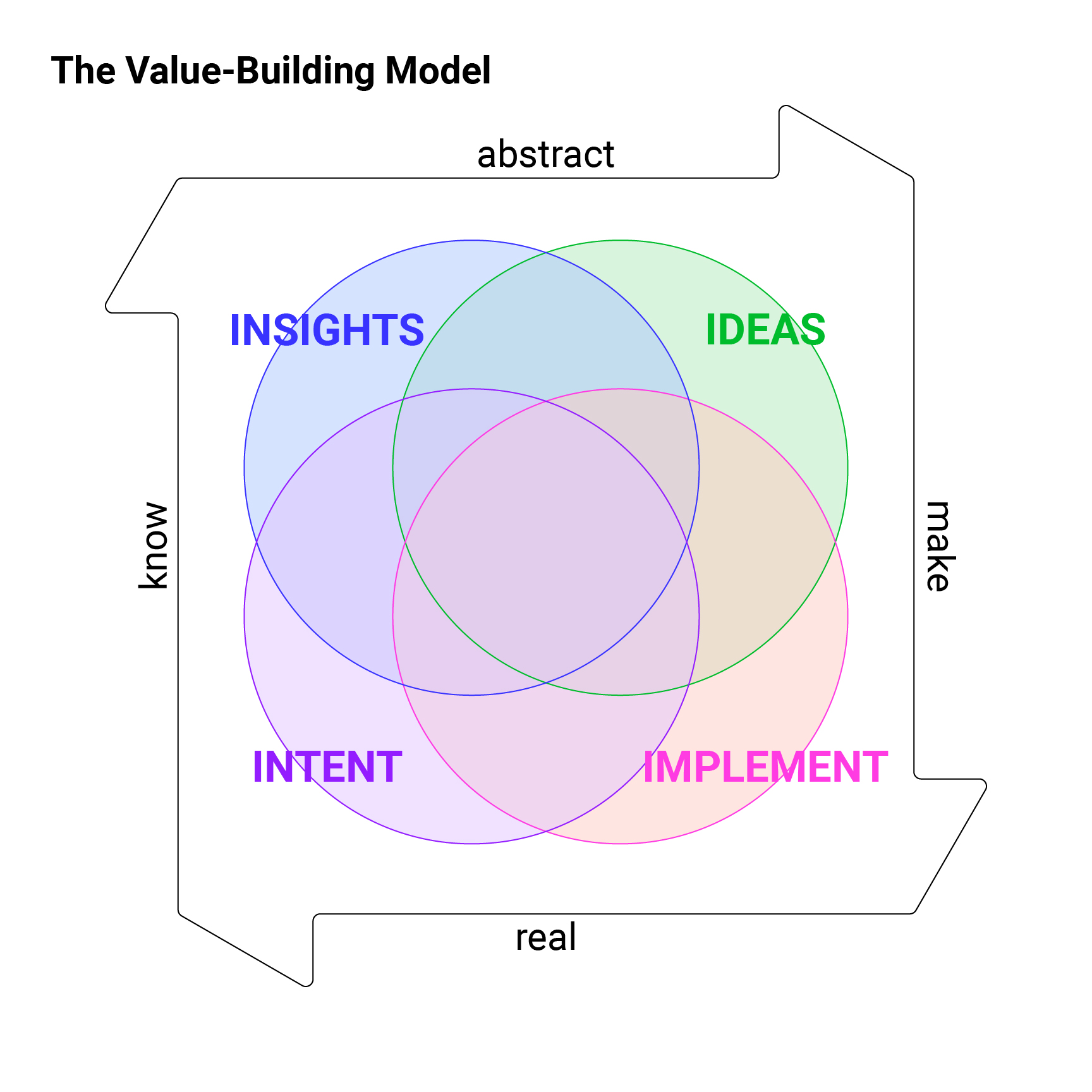
Intent
It defines what we seek to achieve and aligns stakeholders around shared goals.
Intent represents the purpose and vision behind an initiative. This ensures that the process begins with clarity and direction, focusing efforts on addressing meaningful challenges and opportunities.
Insight
It involves identifying needs, behaviors, and motivations and understanding the context of the challenge.
Insight involves uncovering deep understanding through empathy, observation, and analysis. This serves as the foundation for framing challenges and guiding solutions.
Ideas
This encourages divergent thinking and the exploration of a variety of possibilities without immediate constraints.
Ideas encompass the solutions generated during the process. This is where creativity flourishes, aiming to translate insights into action.
Implementation
It focuses on translating abstract concepts into tangible outcomes that can be evaluated and refined based on feedback.
Implementation involves bringing ideas to life through prototyping, testing, and iteration. This ensures that solutions create the desired impact in real-world contexts.
Factors in Value-Building
Furthermore, the four dimensions are divided into Capabilities that organizations require, Approaches they take, and Mindsets they acquire to perform as a design-driven organization.
Capabilities
16 capabilities represent what is being performed in the team/organization.
Approaches
8 approaches represent the way in which the team/organization performs.
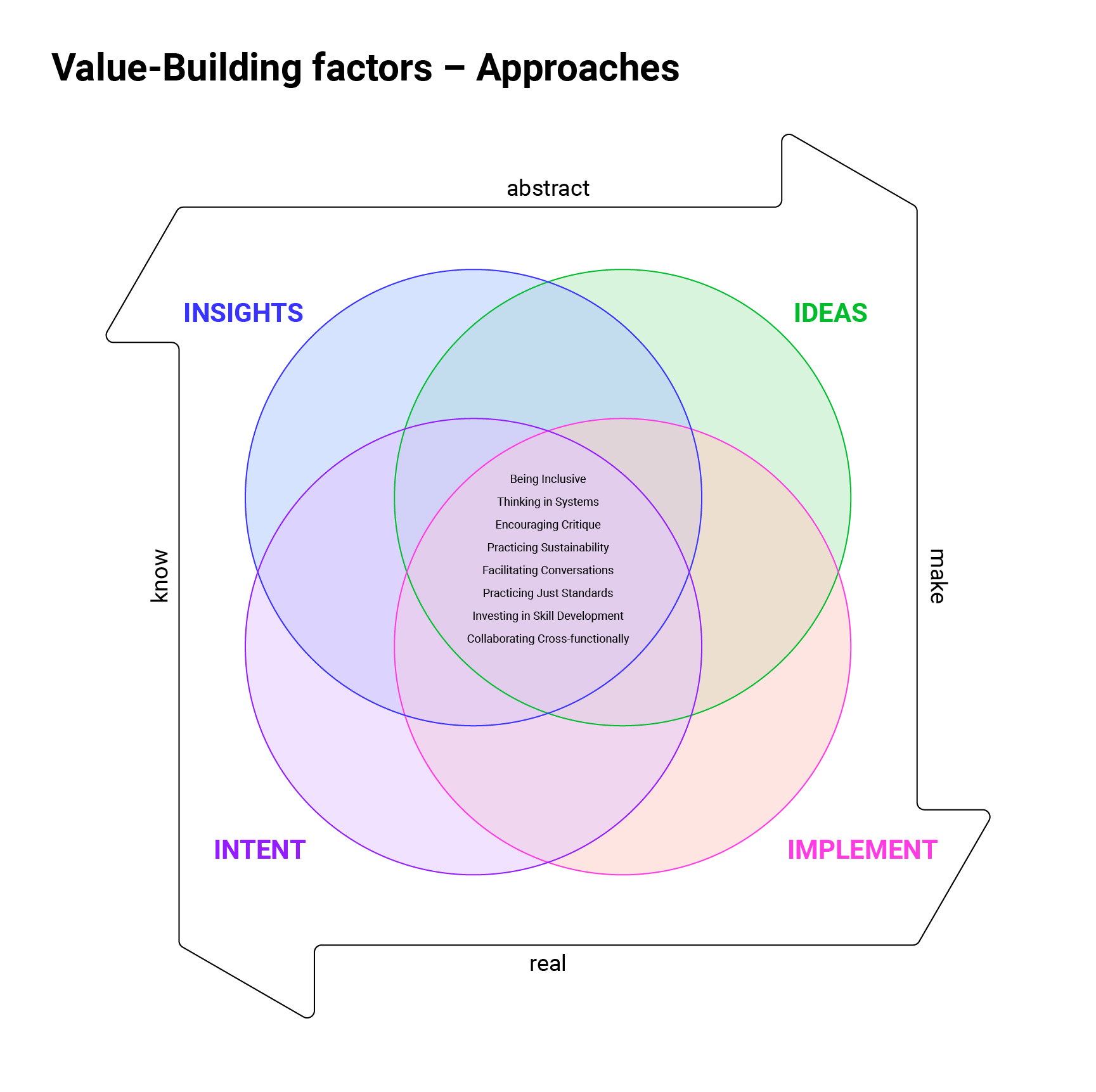
Mindsets
6 mindsets represent the spirit in which the team/organization performs.
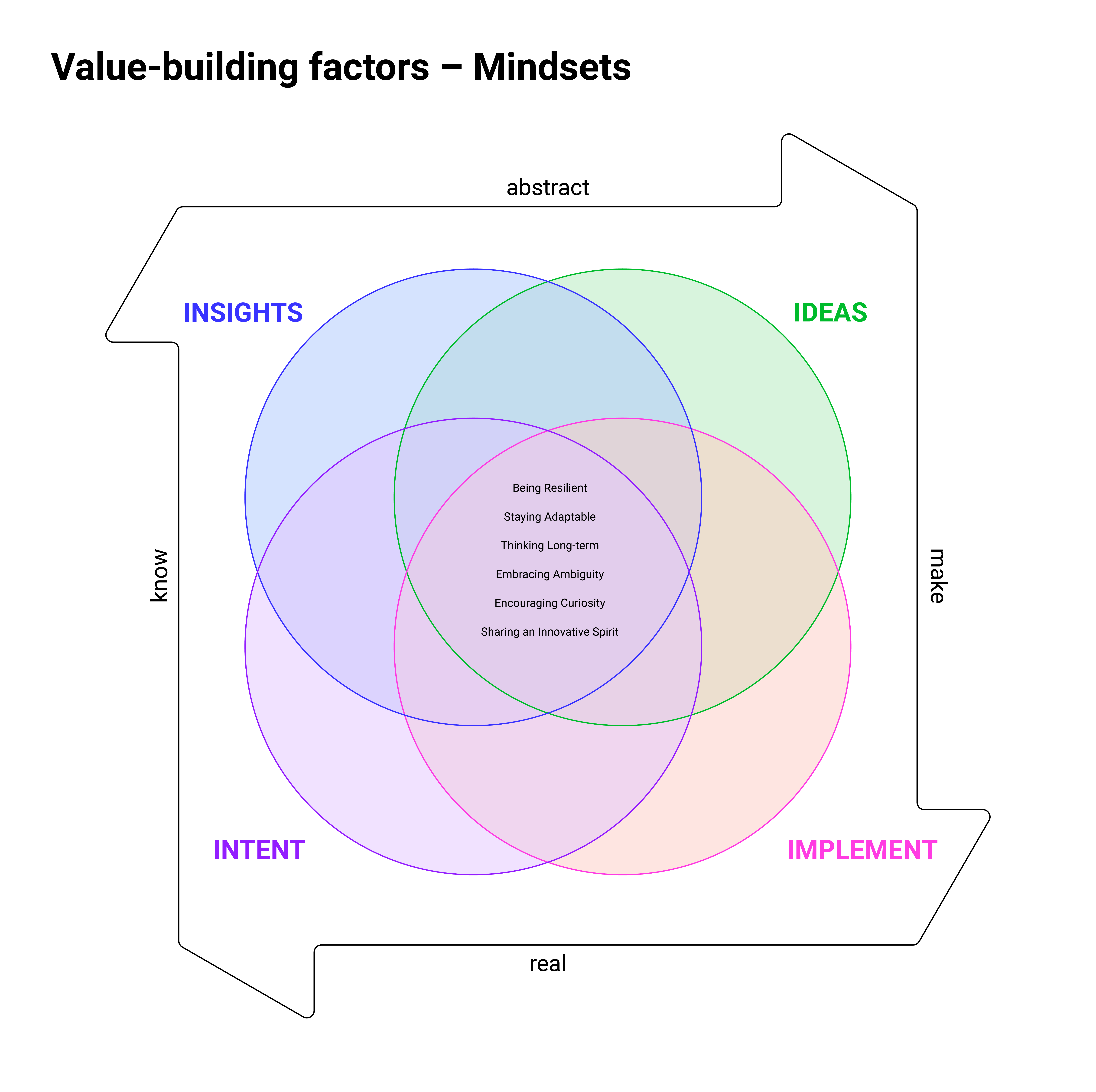
Diagnosis
Analyzing the presence of these 30 driving factors through the presence of performance indicators can indicate the design-driven practices of those teams/organizations.
The diagnosis starts with a survey that both leaders and members of the organization/team complete in less than 10 minutes.
Report
The survey results offer insights into the factors that the team or organization is unaware of, aware of, and practicing.
Analyzing these factors informs the actions a team or organization could take to build design capabilities, enhance its products, and create value for all stakeholders.
The following report (prototype) is prepared for the Community Engagement Team at Lockeat LLC:
P.S.
My team is currently piloting the survey with a few forward-thinking individuals and teams. Reach out to me if you are interested.


